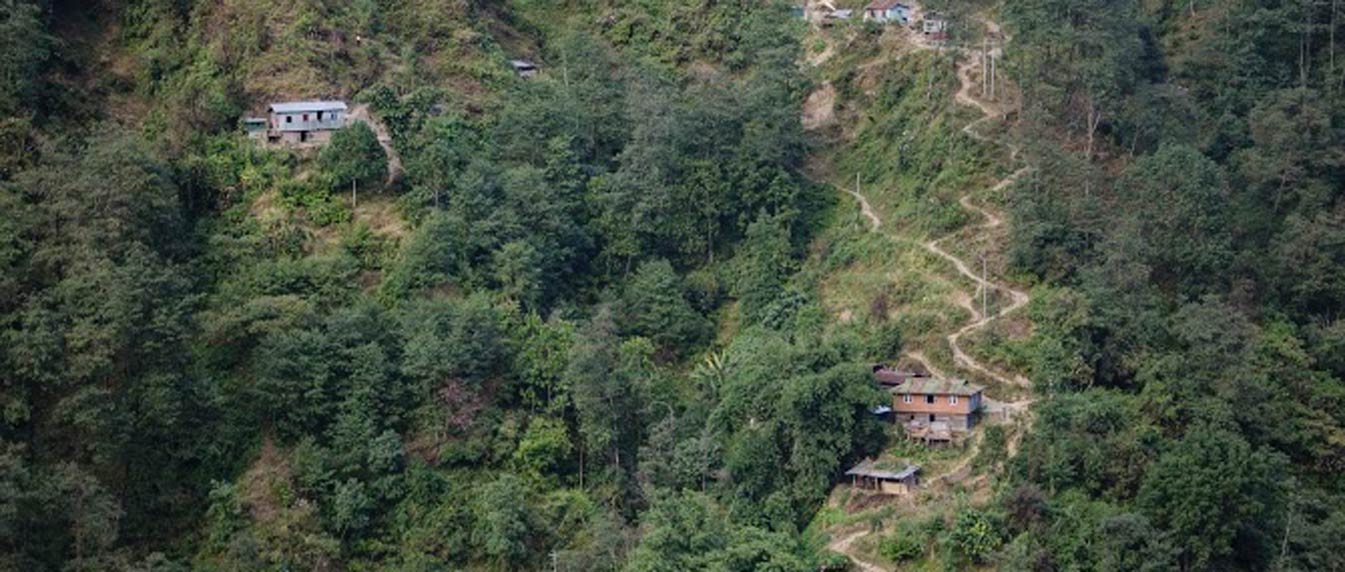
I am writing this article under an umbrella on a muddy dirt road in the eastern Himalayas. Enshrouded by fog from the monsoon rains, thick cavernous forests dominate the mountainside. Scattered throughout the mountains are remote villages, communities of homes that largely rely on agriculture for survival. I have the opportunity to live with the locals here and learn about their livelihoods and relationship with the environment.
For many, daily life consists of tending to fields, collecting fuelwood and raising livestock. India alone has at least 275 million people living in and around forest areas. In the Darjeeling region of Western Bengal, India, where I am working, villages are largely dependent on forests for resources. The once pristine landscapes of the Himalayas, however, are facing immense environmental challenges, some of which are apparent with a hike down the mountainside.
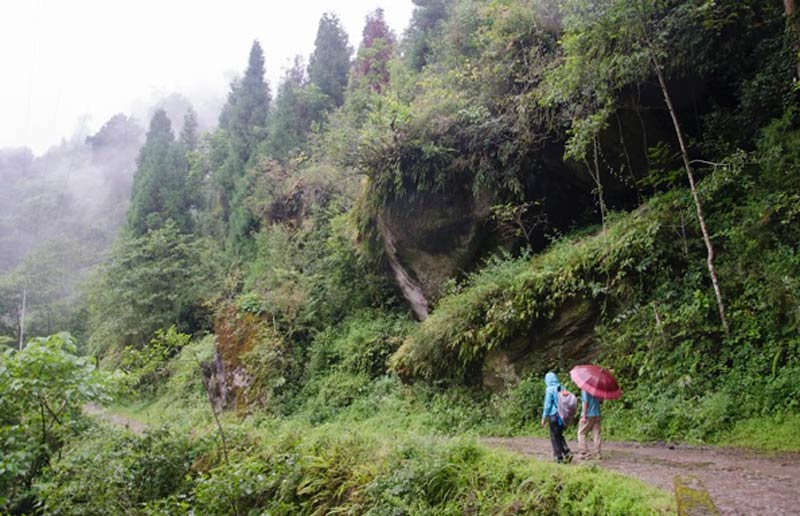
ATREE researchers hiking through Singalila National Park, Darjeeling, West Bengal, India
The extreme nature of the Himalayas means that small changes in climate can fundamentally impact ecosystems. Population growth, human-wildlife conflicts, fuelwood extraction, and soil deterioration all affect these communities. Given the connection of locals to the land, villagers are struggling to cope with rapid climatic changes. The complex relationships between the local economy, forest resources, agriculture and climate change can make tackling regional poverty a challenge.
Research in Ecology and the Environment
ATREE has set up initiatives in 30 villages in Darjeeling’s Singalila National Park and Senchel Wildlife Sanctuary. These programs are helping villages adopt more climate-friendly and environmentally sustainable practices. What’s more, ATREE’s initiatives provide new work options to help local communities adapt to and mitigate climate change. As I interviewed locals, they expressed their concerns over the looming changes to their homes. Still, they seemed hopeful after seeing the improvements that have come from ATREE’s interventions.
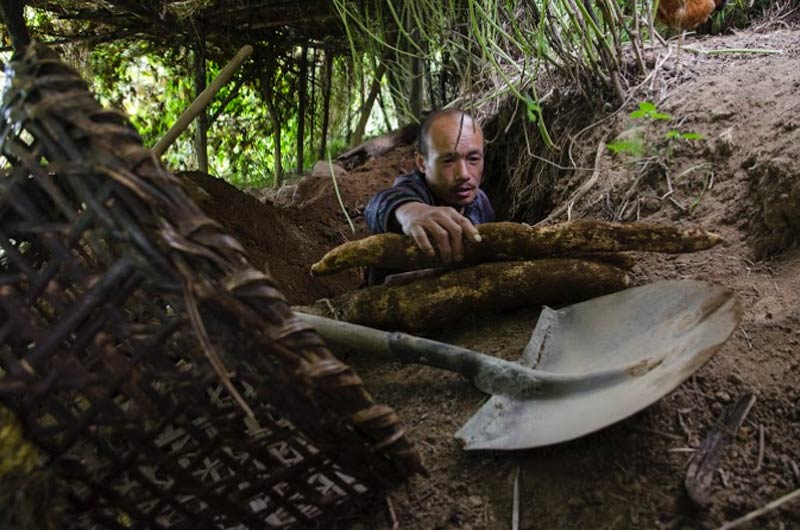
Harvesting crops in Rajabir Village, Singalila National Park, Darjeeling, West Bengal, India
One such intervention targets the lack of sustainable landscape management by helping locals adopt climate-smart agriculture techniques. These practices use land effectively, improve soil usage, and decrease soil erosion and surface runoff. ATREE has further introduced polyhouses, an affordable greenhouse. These insulate heat and increase internal humidity significantly - I could easily feel the difference in the air each time I walked into one. By extending the growing season and increasing food productivity, polyhouses improve food security and result in crop surpluses that can be sold in nearby markets.
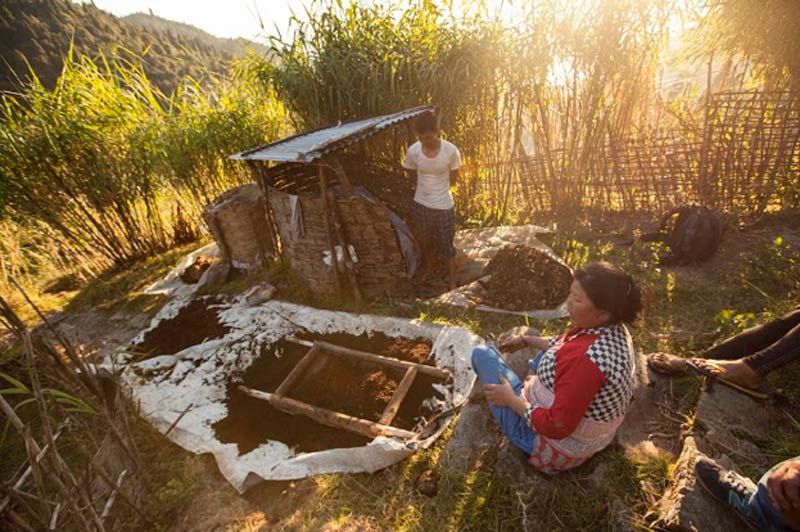
Composting in Rajahatta Village, Darjeeling, West Bengal, India
Since these villages are in or adjacent to forests, human-wildlife conflicts are common. Wild boars, barking deer, macaques and leopards damage crops and livestock. Villagers told me many stories of animals decimating their fields. As a result, they are exploring live fences made of local materials to ward off wild animals and protect their fields.
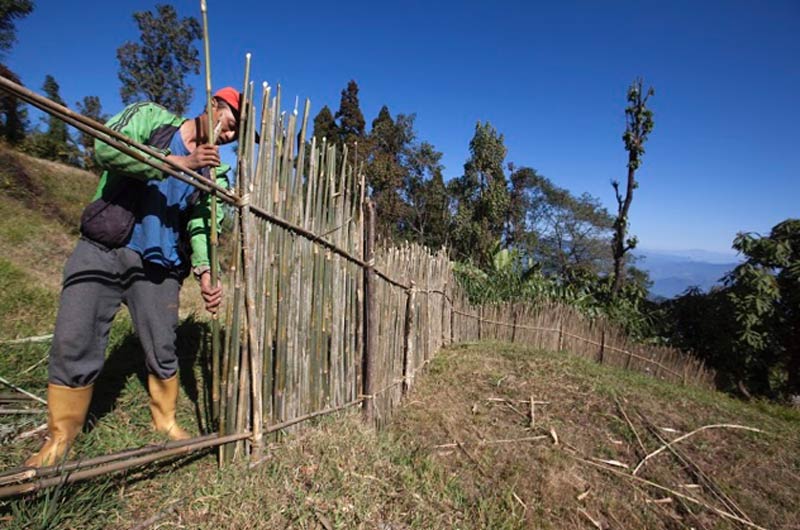
Building a fence in Rambi Village, Darjeeling, West Bengal, India
To protect forests, ATREE has begun installing improved cooking stoves (ICS), a newer energy-efficient cookstove model that builds on the traditional designs. These cookstoves reduce fuelwood consumption and ultimately reduce deforestation. They also improve interior air quality by funneling exhaust outside, making homes safer and more breathable. New microfinance programs increase local access to the cooking stoves.
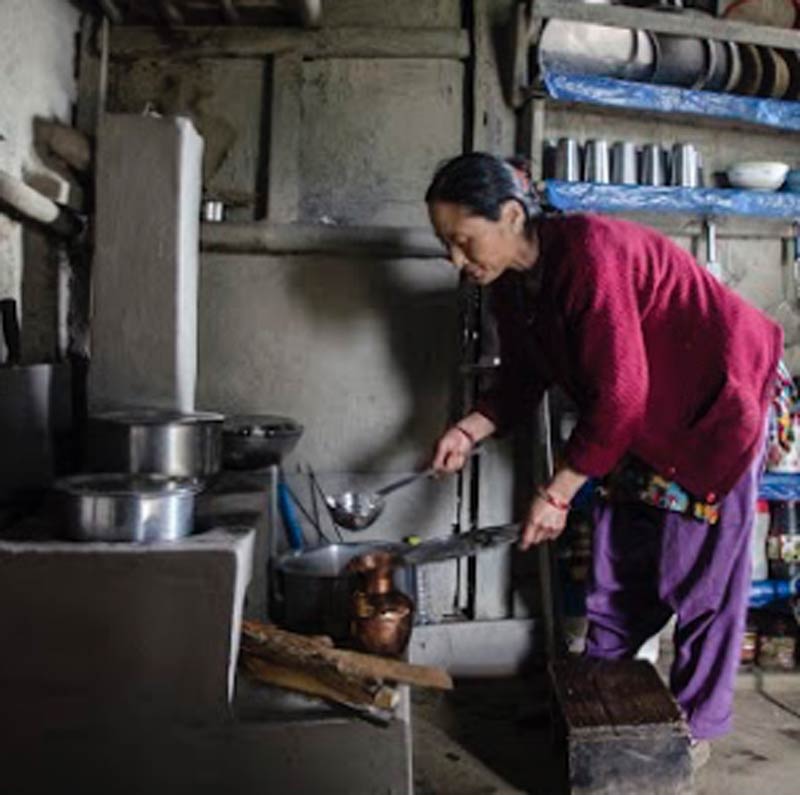
Woman making tea on an ICS in Upper Sepi Village, Darjeeling, West Bengal, India
ATREE has further introduced beekeeping, mushroom cultivation, and homestays. Each of these interventions provides additional income for locals. Beekeeping improves farm productivity via pollination and aids biodiversity in the area. Mushrooms provide an additional food source. Homestays promote ecotourism to these remote areas. I have personally stayed in several homestays where I have had hands-on experiences of life in Himalayan villages.
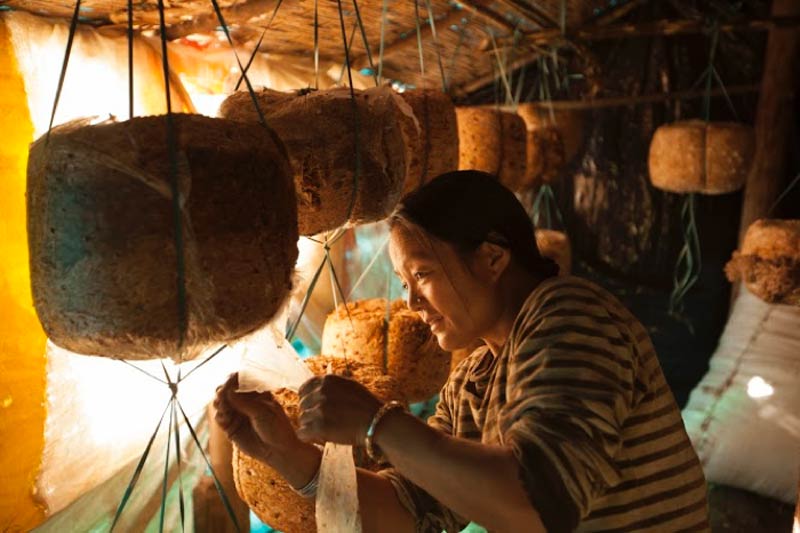
Mushroom cultivation preparation in Rajahatta Village, Darjeeling, West Bengal, India
One of the most important aspects of these interventions is the fact that they are implemented with the input and employment of locals. In this way, ATREE ensures interventions are substantial, necessary and respectful of the wants and needs of the communities that it serves. These communities largely do not have access to quality education and basic resources. In fact, I do not even have the Wi-Fi necessary to post this article. Empowering communities to drive change themselves gives them the tools to engage with local governments to continue driving their own change. These efforts are empowering communities and helping them cope with environmental changes while reducing systematic poverty.

About the author
Saad Amer is an environmental scientist, photographer, and producer. He founded Saad Amer Design, sustainability-focused design hub. He works with ATREE, the National Parks Conservation Association, and UNESCO. He studied Environmental Science and Public Policy at Harvard University.



